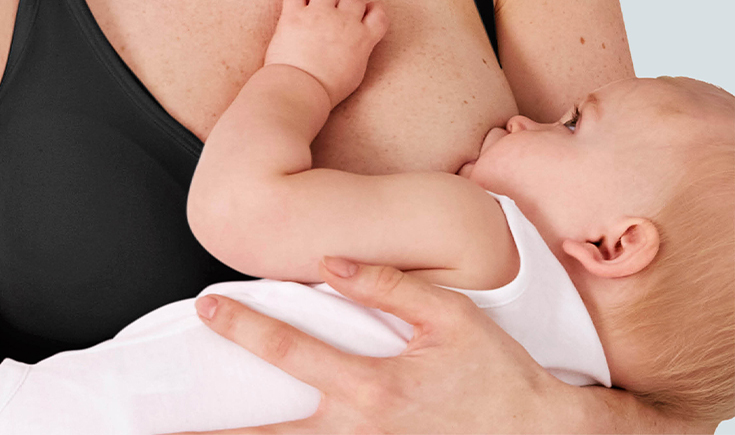

Having a baby brings with it a whole new, exciting, but daunting world of women’s clothing. No one really explains any of it to you either; it’s almost like you’re expected just to know about it or figure it out on your own.
Nursing bras are no exception. If you’re confused about all the different types and brands out there, you’re not alone. We’re here to walk you through it, and hopefully make it all a lot clearer when the time comes to put aside your regular bras and opt for something suitable for breastfeeding and/or expressing.
When you will need a nursing bra
There is no right or wrong time to get fitted for a nursing bra, but you will need to start wearing a maternity/nursing bra in pregnancy once you outgrow your usual bras, which is usually by 16 weeks.
If you can’t get fitted, you can find out your nursing bra size using this handy calculator.
Why regular bras aren’t recommended during pregnancy
If you’re wondering why you can’t just go up a size in a normal underwire bra instead, it’s because your breast shape is changing. An underwire can put pressure on your breasts, in particular later in pregnancy when you may be retaining fluid.
What to look for in a nursing bra
There is no one-size-fits-all style of nursing bra, so here is a summary of what to look for to meet your unique needs:
- Most nursing bras open for breastfeeding, so check that the cup is easy to manage, for both opening and closing (try it using only one hand as your other hand will be holding bub).
- Look for cups that fully drop down so that you can enjoy maximum skin-to-skin contact while breastfeeding to help you bond with your baby. The rigid ‘trapdoor’ cup style can put pressure on a full breast while nursing so it’s best to avoid those.
- You will find bras with clasps in either the centre front or shoulder, so choose something that feels most comfortable for you to manage.
- Check that the cup fabric is lightweight and breathable to avoid moisture and infection.
- A great fabric option is one that is stretchy so that it can grow with your changing breasts, helping to avoid clogged milk ducts.
- We mentioned underwire bras not being recommended during pregnancy, but if you love the support and shape of them, you might like to go for a flexi-wire nursing bra after about the first 4-6 week postpartum when your milk is more established and after the stage of rapid breast growth.
- If you would like some support and something to hold breast pads in while you sleep, there are special sleep bras for this, or you could wear a crop top or other soft-cup bra.
- If you plan to or are already pumping, find a versatile nursing bra that allows for hands-free pumping as well as breastfeeding. One that comfortably holds in-bra pumps and bottles in place, and also fits your electric pump shields. These styles usually tick all of the boxes.
How many nursing bras will you need
You’ll want at least two or three quality bras. You may be changing them regularly if you tend to leak milk. If you take care of your nursing bras by hand washing them in mild soap and warm water, they should last you your breastfeeding journey.























